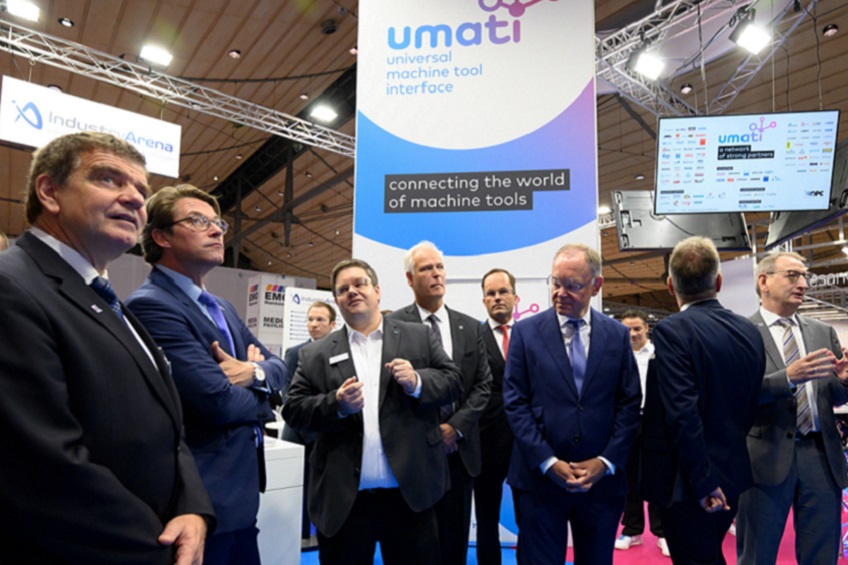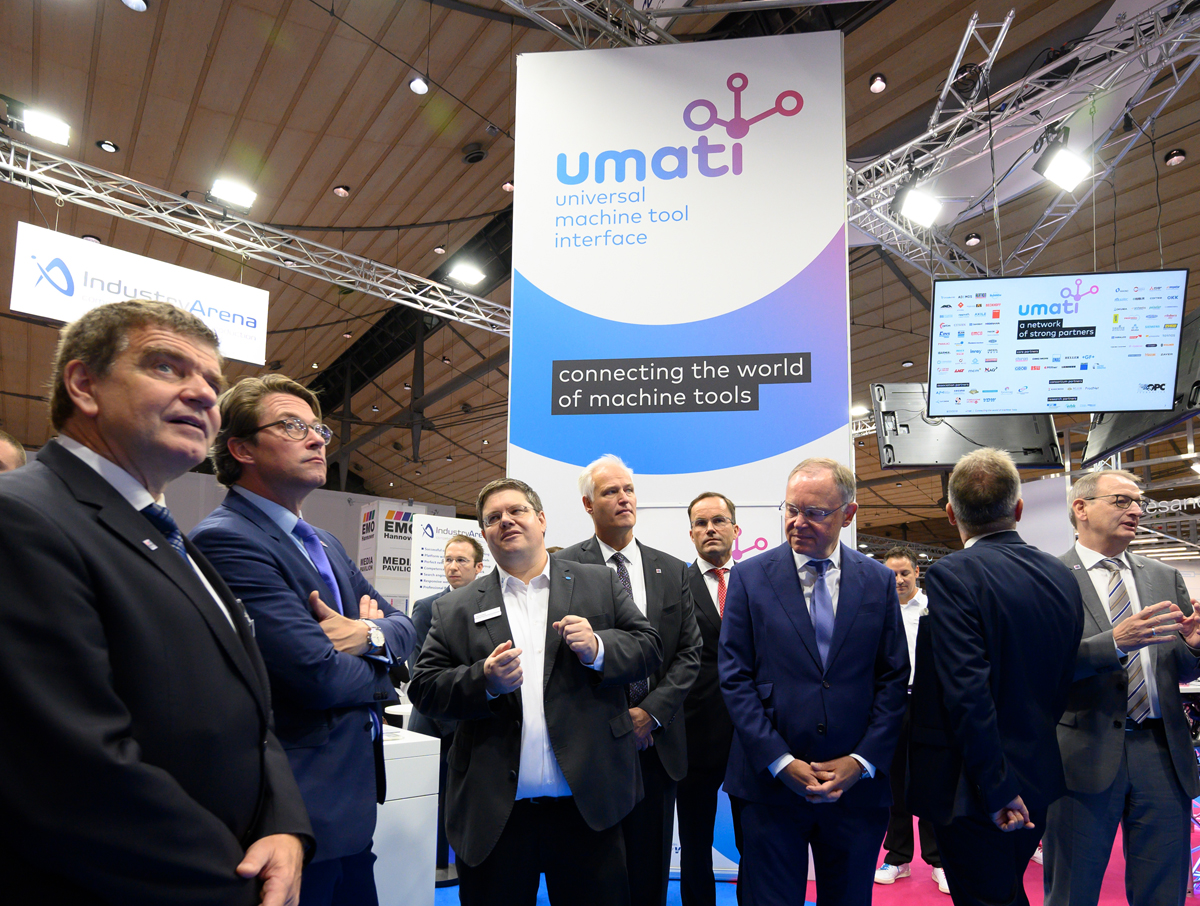Global machine tool community paving the way for Industry 4.0
70 companies from ten countries have connected 110 machines and 28 value-added services at EMO Hannover 2019 via the umati standard interface. “umati is opening up a new chapter in production,” says Dr. Heinz-Jürgen Prokop, Chairman of the VDW (Verein Deutscher Werkzeugmaschinenhersteller – German Machine Tool Builders’ Association), at the umati press conference on 16 September 2019 in Hanover. “The interface enables machine tool manufacturers to fulfill another Industry 4.0 promise: the simple, fast and secure exchange of data,” continues Prokop. Creating a connection and providing a uniform language for machines, systems and software are essential prerequisites for reaping the benefits of digitalisation in production. The fact that individual companies no longer have to concern themselves with the correct functioning of the network interconnection represents a tremendous step forward.

Extensive international involvement in VDW’s umati presentation at EMO Hannover 2019
International acceptance
umati has also already made a strong impression internationally. Three international consortia from major machine tool manufacturing countries have joined the interface: ProdNet from Switzerland, Edgecross from Japan and NCLink from China. In addition, the machine tool associations from China, the United Kingdom, Italy, the Netherlands, Austria, Switzerland, Spain and Taiwan as well as the European machine tool association Cecimo are supporting the project.
“Choosing the OPC UA standard as a basis for the development of the interface supports international dissemination. It ensures that umati can be used free of charge worldwide,” explains Prokop. 90 companies are contributing to the standardization work in the Joint Working Group together with the OPC Foundation. The release of Version 1.0 of the Companion Specification, the next milestone, is planned for the middle of next year.
EMO showcase demonstrating the effectiveness of umati
The showcase at EMO Hannover 2019 demonstrates that the interface is already up and running. Each machine has an OPC UA server which sends the data to a data hub which has been set up especially for the trade fair. There, the software value-added services can access the data via OPC UA clients and show what added value can be generated from the resulting data. How the data is coming together can be experienced via a live dashboard at the umati central information booth (E24) in Hall 9.
umati success will be decided by the market
Whether or not umati is successful will ultimately depend on how customers rate the added value of the interface. For their part, manufacturers must provide this added value in a dependable manner. “For this we need reliable partners who can provide the necessary components such as control architecture and software components. We will achieve this through close cooperation with the control manufacturers and, in future, no doubt also with extensive parts of the supply chain,” says VDW Chairman Prokop.
But until then, the umati working group still has much to do. Version 1.0 will be the starting signal for launching actual products. “In the future, the umati brand should represent a promise: anyone who buys a umati machine and has umati interface software should be able to get the data flowing with no difficulty,” says Prokop.
In order to achieve similarly extensive distribution to that of the USB connector in the consumer goods sector, the VDW is working – in addition to the Companion Specifications – on establishing a binding specification for the configuration of communication parameters, defining minimum requirements for implementation, and developing standardised test procedures to assess performance. Further aims include extending the brand’s global reach, defining binding conditions for its use and setting up a viable organisational structure. “Version 2.0 is already on the horizon because there are many aspects which have not yet been tackled, such as production order management on the machines, or tool management,” concludes the VDW Chairman.
Background umati
umati – universal machine tool interface is an industry initiative of the VDW. It was set up in 2017 by the companies Chiron, DMG Mori, Emag, Grob, Heller, Liebherr-Verzahntechnik, Trumpf and United Grinding. Its goal is to achieve an open standard for data exchange based on the global interoperability standard OPC UA. It also defines all necessary framework conditions to ensure seamless and secure integration of customers’ machines and software. The ultimate goal of the umati brand is to provide international visibility and support its partners’ marketing and quality assurance efforts. The standardisation activities of the Joint Working Group set up with the OPC Foundation are now followed by almost 100 companies all over the world. www.umati.info
Background
The German machine tool industry ranks among the five largest specialist groupings in the mechanical engineering sector. It provides production technology for metalworking applications in all branches of industry, and makes a crucial contribution towards innovation and enhanced productivity in the industrial sector as a whole. Due to its absolutely key role for industrial production, its development is an important indicator for the economic dynamism of the industrial sector as such. In 2018, with around 73,500 employees (annual average in 2018, companies with more than 50 employees), the sector produced machines and services worth 17.1 billion euros.
Downloads


